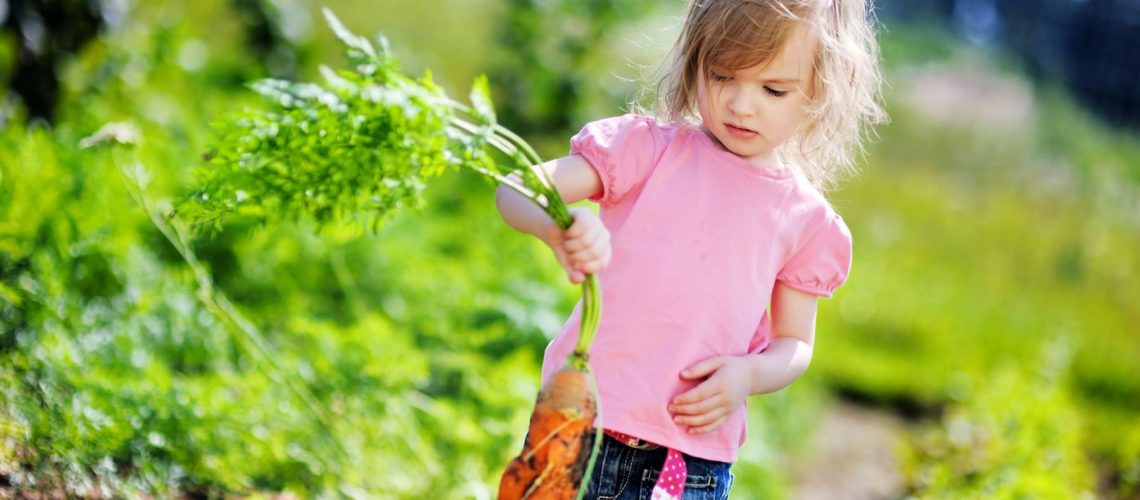Anytime is a great time to grow your own food. I’ve been growing veggies and herbs for many years. My dad always grew veggies during my childhood and I remember snipping chives for my mum to add to her potato salad. Ever since I could I’ve had my own food garden. It’s the best way to enjoy organic food, and it’s done wonders for my mental health over the years. There’s something very grounding about having your hands in the dirt. From when my kids could walk, they’ve enjoyed gardening. At first yes it’s challenging, but after a while they took autonomy of their very own kids veggie patch. When I’d walk out the door, behind me would be my kids. Gloves in hand, boots on, ready for action.
A food garden isn’t as hard as you think. It’s like anything, once you know a few simple principles, then you have them for life and your kids will as well. Self sufficiency is an awesome ideology but that’s definitely not the goal for a beginner. After failing at this many times, I know the most important thing is to succeed, because it’s when you fail once, most people give up. So let’s go over a few basics to get you and the kids harvesting some home grown goodness first go.
Kids veggie patch
Step 1
There’s one really big essential when you’re working out where to put your food garden, and that’s sun. Watch how the sun moves around your yard, because you’ll need 6-8 hours of sun per day for your plants to thrive. If you can also give your patch some relief at the end of the day with some shade, it will thank you, especially in summer. Don’t waste a load of money and position in less than this, because some of your crops won’t produce their potential. This is a great decision for the kids to be involved in because it will help them understand why it’s so important.
Step 2
Most veggie plants and herbs need nutrient dense soil. You’ll get a better crop if you plant in rich soil. It makes sense when you think about it. It’s just like how we perform. We need a spectrum of vitamins and nutrients to fuel our body, and this is the same for plants. If you have an existing garden bed, then all you need to do is work through compost, cow manure, organic soft pellets and maybe some lime. Any of these will help improve the condition of the soil. The whole family can get involved in working it through a garden bed. Your soil needs to drain well so avoid compacting it down with your feet. Position some stepping stones if it’s a large area.
Step 3
Selecting plants for your season and climate is really important. We live in a temperate climate so we can only grow some crops at specific times of the year. TEMPERATE GUIDE DOWNLOAD
Mostly when you visit a garden centre, they’ll have the selection that’s in season. Some places however, will have choices which are at the end of season so it’s good to plan what you’d like to grow in advance. The best tip I have is to start small and not plant too much. Choose 3-4 different plants with the kids. Read the information cards on the seedlings, and don’t buy too many. Plant to the guide. If it says 30 cm apart, stick to this. Over crowding can invite disease, minimise air flow and not allow enough sun.
Step 4
The last essential step to setting up a kids veggie patch is to mulch and water. These both work together to ensure the soil around the roots of your food crops are kept moist and cool. A lot of veggies and herbs have shallow roots, which means they aren’t very good at fending for themselves, especially in the hot weather. We like using sugarcane mulch, but there are many different options on the market which will break down and add benefit to your soil. Choose the natural materials which will decompose like sugarcane mulch or pea straw etc and your veggie patch will love you. Water in well.
So that’s the fundamentals in 4 simple steps. A kids veggie patch is an awesome place to visit daily to check on your seedlings, ensure the pests haven’t arrived and pull out any weeds. Grow your own food at home, then harvest and cook something amazing together with the kids. It’s not only a life lesson, it’s teaching them all about real food. Food that doesn’t come from a pantry. Food which is grown.
Have you read our article: 10 reasons why a children’s garden is the best investment












